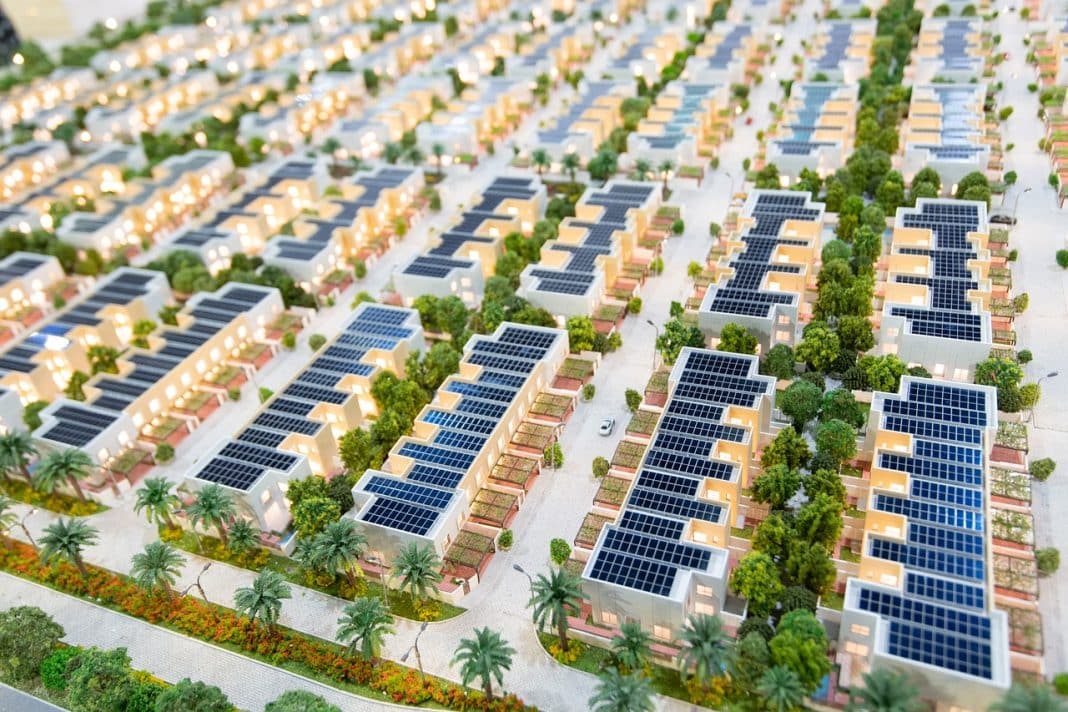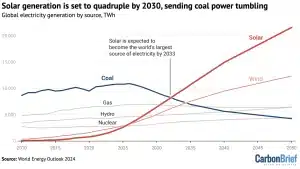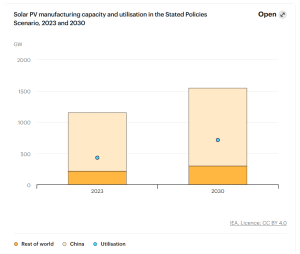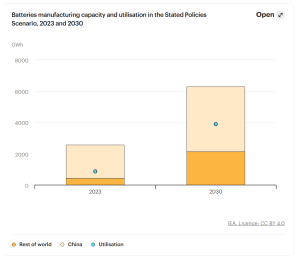The International Energy Agency (IEA) recently released its World Energy Outlook 2024, highlighting big shifts in global energy trends. Solar power is at the forefront of this transformation, with projections showing that global solar electricity generation could grow fourfold by 2030. This growth is set to accelerate the decline of coal and reshape the global energy mix.
Solar’s Big Moment: The Future of Power Generation
According to the report, global energy markets stabilized in 2023, with natural gas prices dropping after a spike in 2022 and energy demand growing by 2.1%, aligning with the pre-2020 average. However, under the Stated Policies Scenario (STEPS), demand growth is expected to slow to 0.7% annually until 2030. Most of this growth will be in emerging markets and developing economies.
Efficiency improvements and increased electrification are key factors, with the Announced Pledges Scenario (APS) showing a slight decline in energy demand, and the Net Zero Emissions (NZE) Scenario indicating a more significant drop.
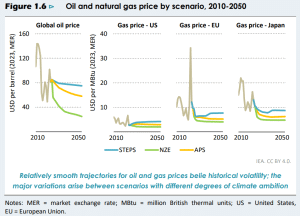
Electricity demand is set to grow across all scenarios, driven by economic progress, electrification of transport (such as electric vehicles), and the rising need for data centers.
By 2033, solar is expected to surpass nuclear, wind, hydro, and natural gas as a major electricity source. Eventually, it could even overtake coal to become the largest source of electricity worldwide. This marks the beginning of what the IEA calls the “age of electricity,” where clean energy growth and efficiency gains gradually reduce our reliance on fossil fuels.
By 2035, electricity’s share of global consumption will reach 26% in STEPS, 29% in APS, and 36% in the NZE Scenario. In particular, China’s electricity demand is expected to surpass the combined demand of advanced economies by 2030.
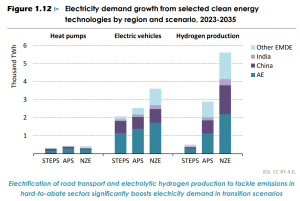
How Renewables Are Reshaping Energy Markets
The rise of solar power is part of a larger shift toward cleaner energy sources. The IEA predicts that as more renewable energy like solar and wind comes online, global carbon dioxide (CO2) emissions from energy will reach their peak around 2025. This could be a major step forward in reducing the impact of climate change.
However, the IEA warns that these changes alone aren’t enough to meet the goals of the Paris Agreement, which aims to limit global warming to well below 2°C, preferably to 1.5°C, above pre-industrial levels. Even with the growth of renewables, CO2 emissions are expected to fall only 4% below 2023 levels by 2030. This would still result in a global temperature increase of about 2.4°C—higher than the desired target.
To reach the 1.5°C target, the IEA outlines a path that it calls “increasingly narrow, but achievable.” This path requires three things:
- a rapid shift to clean energy technologies,
- faster adoption of electric systems, and
- a big reduction in emissions—around 33%—by 2030.
Achieving these goals will demand new policies and large investments in renewable energy, especially in regions that still rely heavily on fossil fuels.
The IEA suggests that along with expanding clean energy, improving energy efficiency is crucial to keeping global energy demand in check, even as economies and populations grow.
Electricity’s Rise For Cleaner Power
The World Energy Outlook 2024 also explores various possibilities, including the growth of electric vehicles, energy demand from data centers, and the rising need for air conditioning due to more frequent heat waves.
No matter the scenario, the IEA expects that demand for coal, oil, and natural gas will peak soon. This shift represents a turning point as the world moves from fossil fuels to renewable energy.
Coal, which has been a major energy source, could start its decline by 2025, particularly as renewables like solar and wind gain ground in Asia, where coal has traditionally been dominant. Moving away from coal is crucial for reducing the carbon footprint of electricity production and for improving air quality in growing urban areas.
For oil and gas, demand is expected to peak around 2030 before gradually decreasing. The transition away from these fuels will be slower because of their key roles in transportation, petrochemicals, and manufacturing.
- The adoption of clean technologies, such as renewables and EVs, is driving a peak in demand for oil, natural gas, and coal by 2030. Yet, additional investment in clean energy is necessary to make more carbon emissions reductions.
However, as EVs become more popular and cleaner alternatives become available, the reliance on oil is expected to drop. The demand for natural gas is also projected to decline as options like green hydrogen and advanced battery storage become more viable. These alternatives are vital for hitting climate goals and ensuring energy security.
Achieving Net-Zero 2050 with Renewables
The report emphasizes that the growth of renewable energy is central to reshaping the world’s energy system. By 2030, renewable energy capacity could grow to nearly 3x of its current size.
While this progress is significant, it’s still not enough to reach the ambitious goals to triple renewable capacity. To meet these goals, the IEA stresses the need for more policy support, innovation, and investment in renewables.
-
Remarkably, solar and wind could provide nearly 60% of global electricity by 2050. However, fossil fuels still met 80% of global energy needs in 2023, though their demand could peak by 2030.
One major factor driving the rise of clean energy is the falling cost of solar and wind power, which has made them competitive with traditional fossil fuels. The IEA estimates that solar capacity could exceed 16,000 gigawatts (GW) by 2050, a huge jump from current levels.
This growth is supported by advancements in battery technology, which help balance the fluctuations of renewable energy sources like solar. In its latest forecasts, the IEA has increased its estimates for battery storage, showing more optimism about the role of these technologies in making renewable energy systems work smoothly.
Despite these promising trends, the IEA stresses that more action is needed to reach climate goals. To stay on track for net-zero emissions by 2050, the world needs more investments in renewable energy and policies that support the shift away from fossil fuels. This could include carbon pricing, subsidies for renewable projects, and regulations that push industries to be more energy efficient.
According to the IEA, the world has the tools to move to a cleaner energy future, but it will take a lot of effort to make the transition happen quickly enough.

